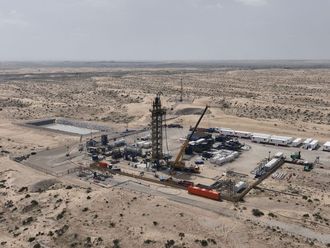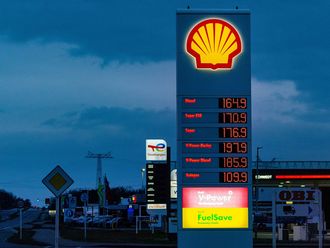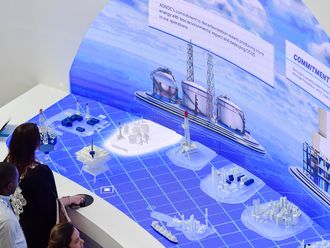Houston: US government officials demanded to see BP's plans for reopening its sealed Gulf of Mexico well after tests found a suspected leak seeping from the seabed.
In a letter addressed to Bob Dudley, BP managing director, National Incident Commander Thad Allen said tests had detected a "seep a distance from the well and undetermined anomalies at the well head."
The letter was posted on Sunday on the website of the joint information centre for the spill. No decision was announced as to whether BP will be ordered to open the valves sealing the well, which would allow oil to resume flowing. BP would restart efforts to capture the oil and funnel it to vessels at the surface after the well is opened.
"I direct you to provide me a written procedure for opening the choke valve as quickly as possible without damaging the well should hydrocarbon seepage near the well head be confirmed," Allen wrote in the letter.
Hours before, BP officials said the company planned to keep the well sealed until it could be permanently plugged by a relief well. Three days of tests on the capped well showed no signs of a hidden leak or other problems that would prompt BP to reopen the well, Doug Suttles, chief operating officer for exploration and production for BP, said on Sunday in a conference call.
Bubbles of gas
The cost of the response to the spill has risen to $3.95 billion (Dh14.5 billion) BP said in a statement Sunday. The shares fell as much as 7.4 per cent in London yesterday.
Pressure inside the well rose slowly to 6,792 pounds per square inch from 6,700 pounds per square inch at the start of the day on July 17, an encouraging sign that the inside of the well may have escaped damage following an April 20 explosion aboard the Deepwater Horizon drilling rig, BP said.
The pressure reading is still lower than the 7,500 pounds per square inch BP initially said would give it confidence to declare the well sound. Kent Wells, BP's senior vice-president for exploration and production, said the lower pressure was consistent with a depleted reservoir after oil had been gushing three months.
It's not unusual for bubbles of gas to seep from the seabed, Darryl Bourgoyne, director of the petroleum engineering laboratory at Louisiana State University, said.
"It could be a leak, it could be biogenic gas, gas created by bacteria," he said. "It could lead to opening the well if they're very, very cautious."
Allen's letter demanded BP provide records and documentation of all the tests it is running on the well while it remains sealed.
"Monitoring of the seabed is of paramount importance during the test period," Allen wrote. "As the National Incident Commander, I must remain abreast of the status of your source control efforts."
Bill Salvin, a BP spokesman, said BP complied with all government requests and will continue to do so.
The relief well, the only option for permanently plugging the well by filling it with mud and cement, should remain the priority over other attempts to stop the oil flow, Allen said. He asked BP to provide him with a plan and schedule for all well control efforts and how they might conflict or delay the relief well.
BP bolted a 40-foot (12-metre) stack of valves on top of the well that it used to stop the flow of oil July 15, when it began testing for damage. The company temporarily halted drilling its relief wells while it conducted tests on the capped Macondo.
Work has begun again, and the wells should intercept the leak by the end of the month and have it plugged by mid-August, Suttles said.
The Macondo well has produced the biggest oil spill in US history, spewing 35,000 to 60,000 barrels of oil a day from a mile-deep in the water, according to a US government-led panel of scientists.











